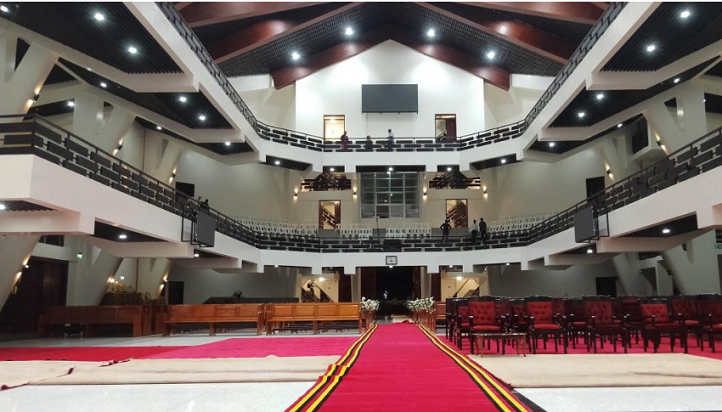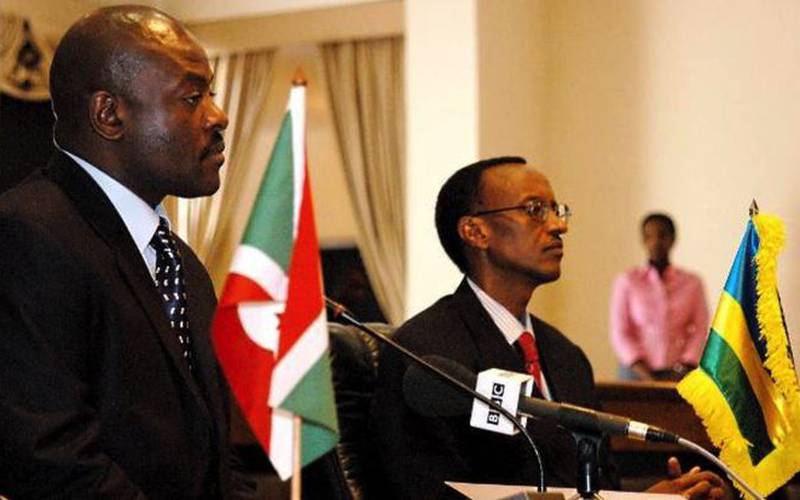Hundreds of Anglicans from the Kampala Diocese braved the morning rain to witness the consecration of the long-awaited 5,000-seater new All Saints Cathedral, alongside the enthronement of their fifth assistant bishop.
The service drew nearly all bishops from the Church of Uganda Province, as well as other clergy members, politicians, technocrats, and business leaders, all under tight security due to the presence of the President as the chief guest. The cathedral is situated just a stone’s throw from Nakasero State Lodge, where the President resides.
The ceremony commenced solemnly with the consecration and blessing of the new cathedral, a project that has taken almost two decades to bring to fruition.
Led by select bishops, the ceremony began with the dedication of key areas in the cathedral, beginning with the baptismal font consecrated by Bishop Hannington Suubi of the East Busoga Diocese.
Other bishops took on similar roles at various stations throughout the ceremony. At each location — from the baptismal font to the pews, lectern, Bible, and pulpit — prayers were offered, ending with the Archbishop dedicating the entire cathedral.
“The word ‘cathedral’ comes from the Greek ‘cathedra,’ meaning ‘chair’ — the seat from which the diocesan bishop leads the faithful in their region,” Archbishop His Grace Dr Stephen Samuel Kaziimba Mugalu explained during the dedication. “This symbolic chair, placed prominently in the cathedral, represents the bishop’s authority to teach, sanctify, and govern his people.”
After the cathedra, the consecration of the altar was another deeply symbolic ritual led by the Archbishop and the retiring Assistant Bishop of Kampala, Bishop Hammington Mutebi.
As the rituals were observed, faithful were quiet, many witnessing such a rare ceremony for the first time, the atmosphere was reverent and awash with slow, melodic hymns from the choir, who were clad in red robes adorned with yellow ribbons.
After the consecration, the Archbishop announced that the newly consecrated building would henceforth serve as the cathedral, while the former cathedral would now be regarded as a regular church, a “proto-cathedral,” in line with Christian tradition.
Reflecting on the completed cathedral, Bishop Sheldon Mwesigwa, the provincial dean expressed gratitude, calling it “a beautiful moment.” He marvelled at the cathedral’s grandeur, adding, “May we be as beautiful as we worship God within its walls.”
During his homily, Alfred Olwa, the Lango Diocesan Bishop, emphasized that the new building is more than just mortar and bricks; it stands as a testament to the stewardship of the faithful and friends of the Kampala Diocese.
In his speech as the event’s chairperson, former Prime Minister John Patrick Amama Mbabazi said that the grand structure reflects the congregation’s faith and commitment, addressing the growing need for more space for worshippers.
He described the unique architecture of the new cathedral as a bridge between the post-modern design and the features of the old church, symbolizing both history and the future. Notably, the new cathedral is ten times larger than the former structure and arguably the largest auditorium in East Africa.
Mbabazi stated that this achievement is not merely an architectural accomplishment but a commitment to the faithful. He added that past leaders of the Kampala Diocese, both living and deceased, must be smiling proudly on this momentous occasion.
President Yoweri Museveni who arrived late to the event, despite staying next door, said that he has often questioned why the Archbishop of the Church of Uganda does not have his seat at Namirembe.
While he awaited an explanation on the matter, he congratulated the faithful at All Saints for constructing a worthy cathedral for the Archbishop’s church.
In line with his usual approach, he encouraged the congregation to recognize and develop their talents to work their way out of poverty. Citing several Bible verses to support his message, he humorously remarked that when he attends church, he feels his knowledge of the Bible returns, drawing laughter from the audience.
President stated that he and his wife contributed 100 million shillings to the church from their cows. He also promised to donate one billion shillings to the church. Additionally, he presented the new assistant bishop of Kampala with the keys to a new car, a gesture that has become a tradition.
Nkoyoyo – the vision bearer
The journey of the construction of a new cathedral has spanned several leadership changes, beginning with the visionary Archbishop Livingstone Mpalanyi Nkoyoyo, who is immortalized as a “visionary, ever-spirited and enthusiastic builder.” Nkoyoyo handed over the reins to Archbishop Henry Luke Orombi, who physically initiated the groundbreaking and project launch on February 11, 2011.
Orombi also passed the mantle to Stanley Ntagali, who later handed it over to the current Archbishop, Kaziimba Mugalu.
In an article for Consecration Magazine, Eng. Richard Mugisa, Chairperson of the All Saints Cathedral Project (ACP), highlighted the origins and progress of the new All Saints Cathedral in Kampala, a structure born from necessity. Over its 112-year history, All Saints Parish has transformed from a modest chapel into a vibrant, cosmopolitan cathedral, serving a diverse community of more than 6,000 worshippers.
“As the congregation expanded, tents were introduced 25 years ago to accommodate the overflow, but it soon became apparent that a more permanent solution was required,” Mugisa noted.
He added that the journey to the new church started in 2009 after acquiring the land where the new cathedral would sit, the construction also kicked off in 2009 and it has been done in five phases each phase looking at something. The fifth phase which includes exterior designing is still ongoing.
The new 5,000-seat sanctuary, located across from the former cathedral, features a 12-story prayer tower, five chapels, two elevators, and basement parking. The total project cost is estimated at $10 million, covering construction, consultancy fees, taxes, and the purchase of additional land on Lugard Road.
“With its multi-level complex, this project would serve not only as a place of worship but as a beacon of faith for future generations,” Eng Mugisha noted.
Natives excluded from All Saints’ Church on the grounds of “hygiene.”
Records indicate that All Saints’ Church was established in 1912 as a chapel for the European hospital in Nakasero, Kampala. Initially serving the expatriate community, the church operated under the Church of England rather than the Native Anglican Church (NAC) or the Diocese of Uganda.
In recounting the church’s history, now the seat of the Diocese of Kampala, Prof. Sam Tulya-Muhika noted that as Uganda approached independence and in the years following, the parish rapidly expanded its congregation to include more non-expatriate members.
“Bishop John Willis had earlier, in 1930, written to the Parish Council requesting inclusion of Africans in their Sunday Services; this had been rejected, on grounds of “hygiene, not racism” …so they wrote back,” Prof. Tulya-Muhika wrote.
As non-expatriates joined the congregation, the original church building quickly became too small to accommodate the growing numbers. To address this, expansions were undertaken in the late 1950s and early 1960s, increasing its seating capacity to 200.
Prof. Tulya-Muhika described the mid-1970s as the “painful birth of the Kampala Diocese” during a challenging time for the Anglican Church. During this period, the church, located near the Nakasero State Lodge, underwent a significant expansion, transforming it into a cathedral and increasing its seating capacity to 800.
Regarding the project, it’s noted that the Planning and Development Sub-Committee experienced some spirited debates. The “old guard,” including Prof. Tulya-Muhika, advocated for a traditional cathedral design featuring a slanted roof to channel stormwater into gutters, while the “younger generation” favoured a modern architectural approach.
“Some of us even suggested something along all the lines of the original structures proposed in 1913/14, for Namirembe Cathedral as above. However, as was the case with Namirembe, ultimately a unique ultra-modern structure… was adopted,” he noted.
Meanwhile, during the same event, the Archbishop, in his capacity as Bishop of Kampala, ordained deacons and priests and installed six canons. The ceremony was crowned with the consecration and installation of the fifth Assistant Bishop of Kampala, Canon Jackson Frederick Baalwa, who succeeded the retired Bishop Hannington Mutebi.
-URN




